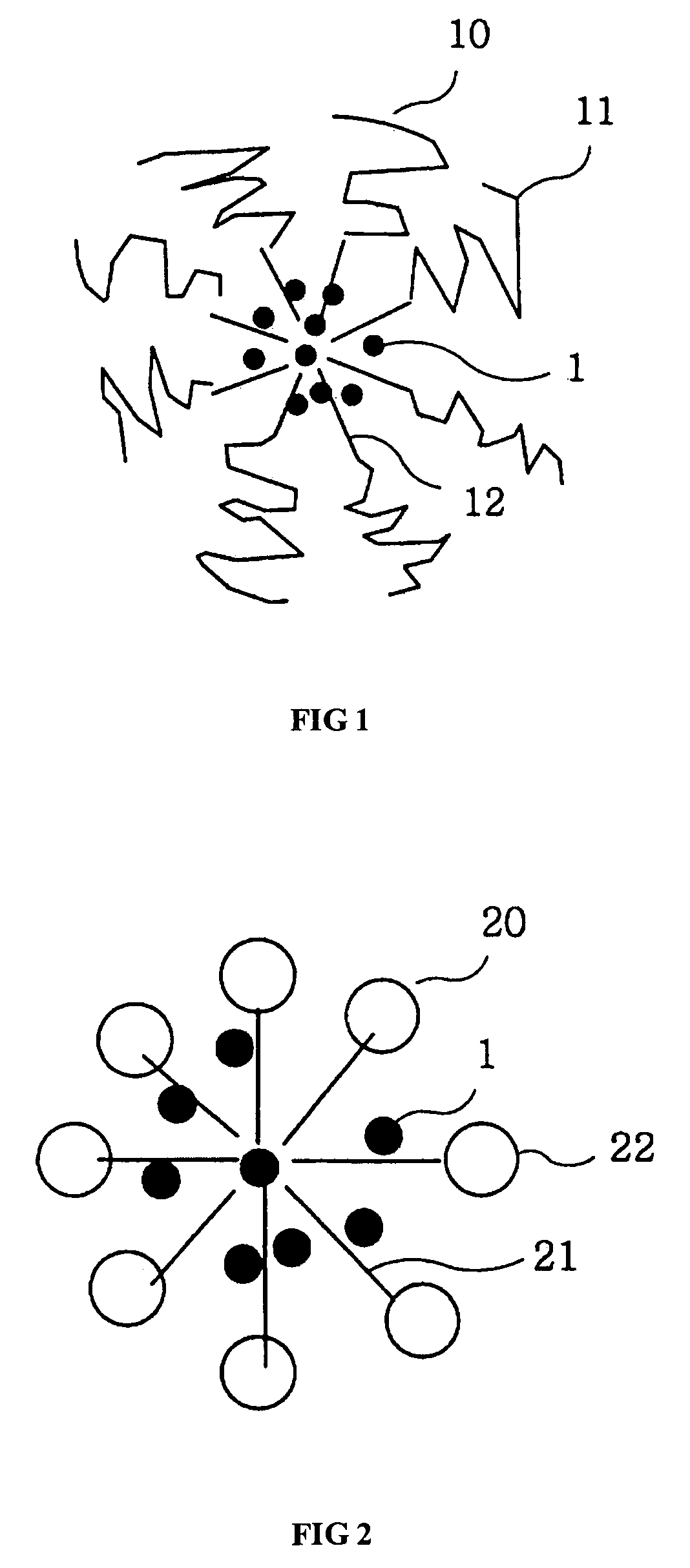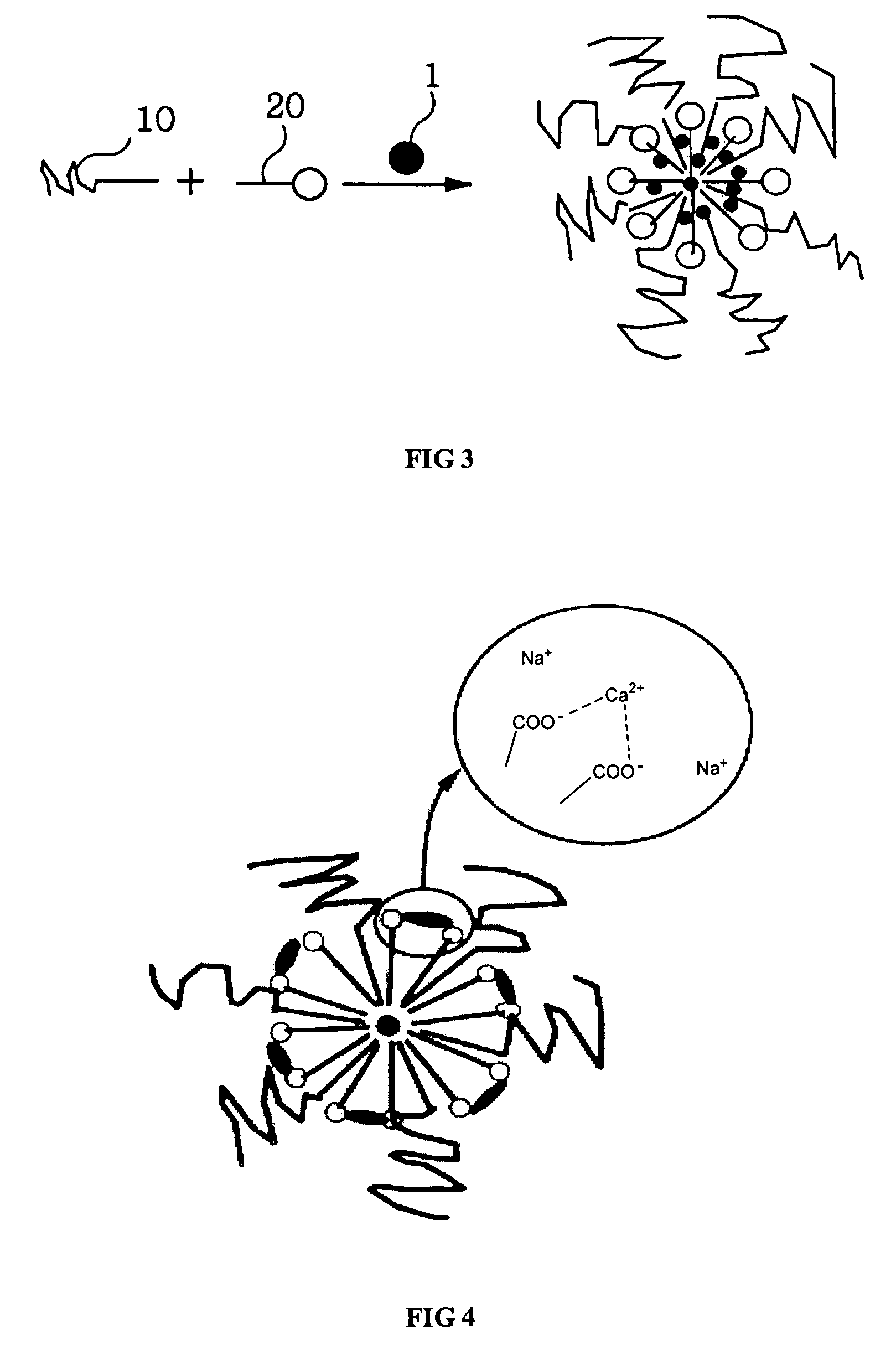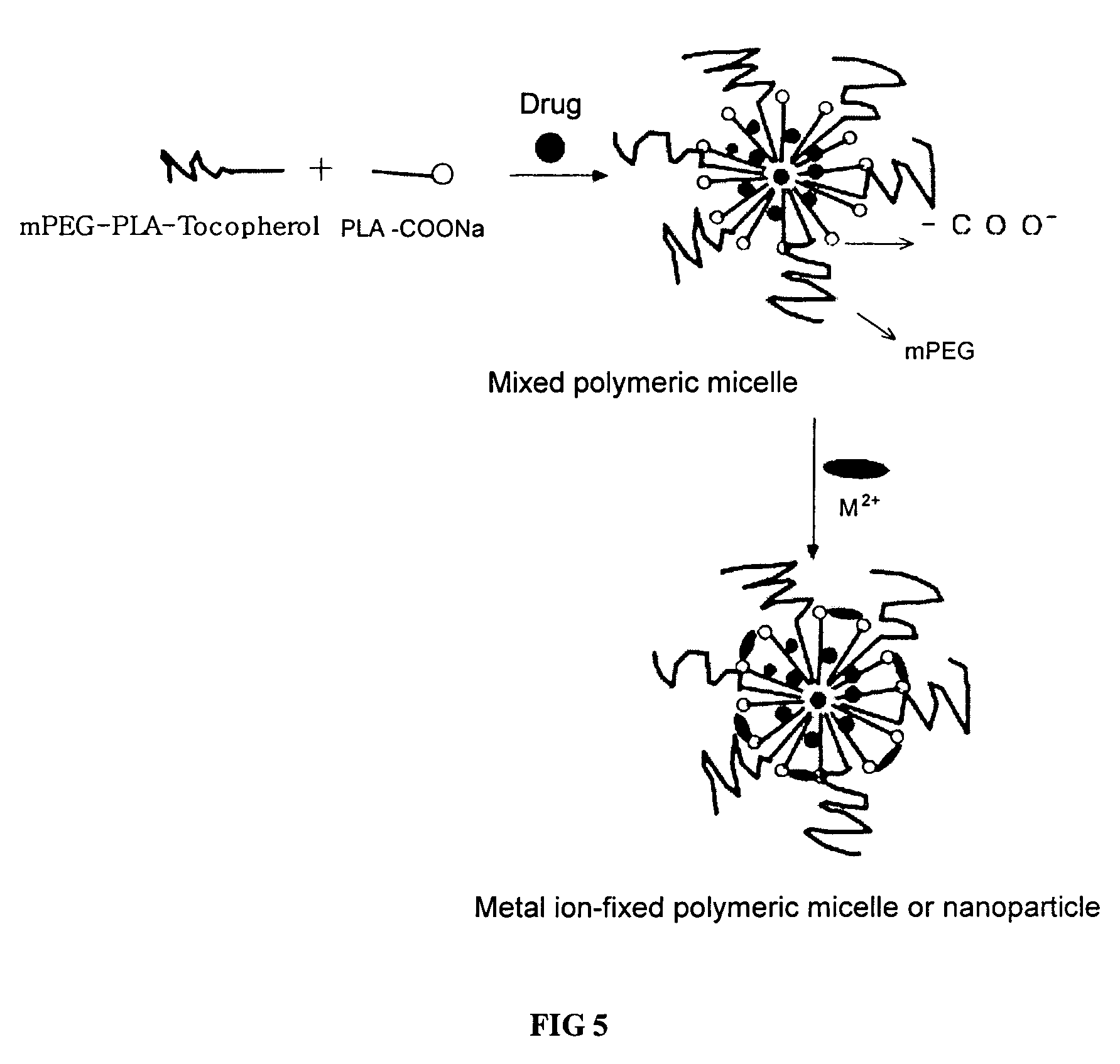Amphiphilic block copolymer and polymeric composition comprising the same for drug delivery
a technology of amphiphilic block and copolymer, which is applied in the direction of drug compositions, organic active ingredients, synthetic polymeric active ingredients, etc., can solve the problems of limited use unsatisfactory performance of liposomes as drug carriers, and unsatisfactory side effects, so as to improve affinity, increase the hydrophobicity of the hydrophobic blocks, and the effect of the same molecular weigh
- Summary
- Abstract
- Description
- Claims
- Application Information
AI Technical Summary
Benefits of technology
Problems solved by technology
Method used
Image
Examples
preparation example 1
Synthesis 1 of D,L-polylactic Acid (PLA-COOH)
[0139]One hundred grams of D,L-lactic acid were introduced into a 250 ml three-neck round-bottomed flask. The flask was equipped with a stirrer, and heated in an oil bath to 80° C. The reaction was performed for 1 hour under the pressure reduced to 25 mmHg by a vacuum aspirator to remove excessive moisture. The reaction was then performed at a temperature of 150° C. under a reduced pressure of 25 mmHg for 6 hours. The resulting product was added to 1 liter of distilled water to precipitate the polymer. The precipitated polymer was then added to distilled water to remove the low molecular weight polymer that was soluble in an aqueous solution with a pH of 4 or less. The precipitated polymer was then added to 1 liter of distilled water, and the pH of the aqueous solution was adjusted to 6 to 8 by the addition of sodium hydrogen carbonate portionwise thereto to dissolve the polymer. The water-insoluble polymer was separated and removed by ce...
preparation examples 2 to 4
Synthesis 2 of D,L-polylactic Acid (PLA-COOH)
[0140]D,L-polylactic acid was obtained according to the same procedure as in Preparation Example 1 except for the control of the reaction temperature, pressure, and time as set forth in Table 1. The number average molecular weight and the yield of D,L-polylactic acid synthesized from the above Preparation Examples 1 to 4 are shown in the following Table 1.
[0141]
TABLE 1PreparationTemperatureTimePressureYieldExample(° C.)(hours)(mmHg)Mn(%)11506255407821601210114083316024101550844160245210087* Yield = (Obtained polymer / Used monomer) × 100
preparation example 5
Synthesis 1 of the Copolymer of D,L-lactic Acid and Glycolic Acid (PLGA-COOH)
[0142]Fifty-five (55) grams of D,L-lactic acid (0.6 moles) and 45 grams of glycolic acid (0.6 moles) were introduced together into a 250 ml three-neck round-bottomed flask. The same procedure as in Preparation Example 1 was carried out except that the reaction was performed at a temperature of 150° C. and under a reduced pressure of 10 mmHg for 12 hours.
PUM
 Login to View More
Login to View More Abstract
Description
Claims
Application Information
 Login to View More
Login to View More - R&D
- Intellectual Property
- Life Sciences
- Materials
- Tech Scout
- Unparalleled Data Quality
- Higher Quality Content
- 60% Fewer Hallucinations
Browse by: Latest US Patents, China's latest patents, Technical Efficacy Thesaurus, Application Domain, Technology Topic, Popular Technical Reports.
© 2025 PatSnap. All rights reserved.Legal|Privacy policy|Modern Slavery Act Transparency Statement|Sitemap|About US| Contact US: help@patsnap.com



